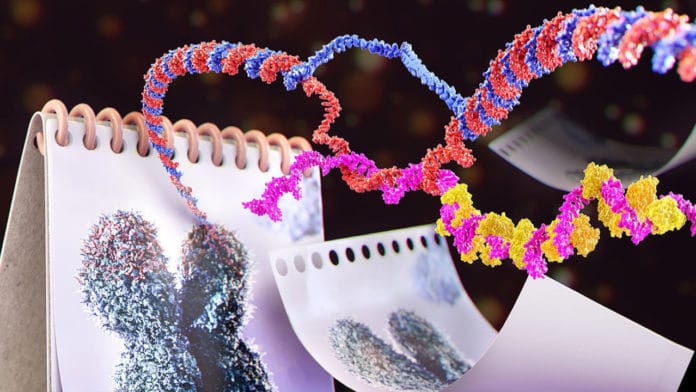The stretches of DNA called telomeres to form protective caps at the ends of chromosomes. During cell division, these telomeres become shorter. This makes protective cap less effective.
Once these telomeres get too short, the cell stops dividing-leading cell aging and age-related diseases, including cancer.
Its been known that RNA species called TERRA help to regulate the length and function of telomeres. TERRA belongs to a class of molecules called noncoding RNAs, which are not translated into proteins but function as chromosomes’ structural components. TERRA accumulates at chromosome ends, signaling that telomeres should be elongated or repaired.
The mechanisms by which TERRA is recruited to chromosome ends remain poorly defined.
To know how TERRA got to the tip of chromosomes and remained there, scientists at EPFL and Masaryk University set out to analyze the mechanism through which TERRA accumulates at telomeres, as well as the proteins involved in this process.
They visualized TERRA molecules under a microscope and found that a short stretch of the RNA is crucial to bring it to telomeres. Once TERRA reaches the tip of chromosomes, several proteins regulate its association with telomeres. Among these proteins, one called RAD51 plays a particularly important role.
EPFL Professor Joachim Lingner said, “RAD51 is a well-known enzyme that is involved in the repair of broken DNA molecules. The protein also seems to help TERRA stick to telomeric DNA to form a so-called RNA-DNA hybrid molecule.”
“This type of reaction, which leads to the formation of a three-stranded nucleic acid structure, mainly happened during DNA repair. The new study shows that it can also happen at chromosome ends when TERRA binds to telomeres. This is paradigm-shifting.”
Scientists also observed that the short telomeres recruit TERRA much more efficiently than long telomeres. However, why this happens remains obscure.
According to scientists, when telomeres get too short, either due to DNA damage or because the cell has divided too many times, they recruit TERRA molecules. This recruitment is mediated by RAD51, which also promotes the elongation and repair of telomeres.
Lingner says, “TERRA and RAD51 help to prevent accidental loss or shortening of telomeres. That’s an important function.”
Considering telomeres’ role in health and disease, it is significant to understand how the newly discovered mechanism is regulated in a very complex cellular environment.
Lingner says, “We put forward a model, which is supported by the data we have—but often in science, it turns out that the model must be modified. There can certainly be additional surprises.”
Scientists are further planning to answer other questions, such as whether RAD51 mediates other noncoding RNAs’ association with chromosomes. They also want to characterize the machinery that mediates TERRA’s association with chromosomes and work out the functions that this association enables.
Journal Reference:
- Feretzaki, M., Pospisilova, M., Valador Fernandes, R. et al. RAD51-dependent recruitment of TERRA lncRNA to telomeres through R-loops. Nature, (2020). DOI: 10.1038/s41586-020-2815-6
